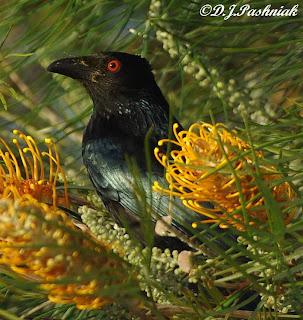This post is for World Bird Wednesday


The next morning we were out again before 7am but this early start did not really help as there was a heavy fog drifting from the south and completely covering the sand island. Even the Point itself was misty. It was more than an hour before the mist lifted and the day turned bright and sunny.


We did not count as many birds as we had found the previous month but it was not a really high tide and there were possibly sand spits exposed in other parts of the Strait where the birds could have been roosting. We counted 9 species and 130 birds.
The Double-banded Plovers (Charadrius bicinctus) were showing lots of bright breeding plumage. There were three of them searching for food among the leaves at the edge of the water. There have been very high winds for the past week and a lot of vegetation must have had leaves stripped off.


This bird turned and faced me and the photo shows how it has been putting on weight ready for the migration back to New Zealand. These birds are 17.5-19cm - a bit over 7 inches - in length. It is a long way across the Tasman ocean to New Zealand - (more than 1500 miles) - and there are no places to stop and rest. The fat the birds put on provides the energy for their long distance flight.
































